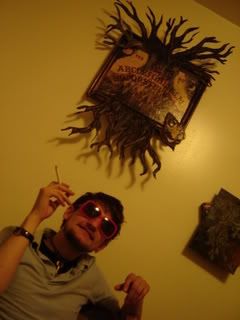At a pivotal moment, in the midst of a tense piece of dialogue in Haruki Murakami’s 1988 novel “Dance Dance Dance,” Gotanda, an actor, explains to the unnamed narrator, “I get this gap between me Gotanda and me the actor and stand back and actually observe myself doing shit. I’m on one side of this very deep, dark fault, and then unconsciously, on the other side, I have this urge to destroy something.” This is a problematic phenomenon for the troubled character, who expresses that it “never happens when other people are around, though. Only when I’m alone.”
Through Gotanda’s dialogue admissions in these passages, Murakami establishes a paradigm, and at the same time a paradox, of the ways in which artists (and artistically-minded individuals) construct their identities. By doing so, he also sheds light on the construction of his own novel, as it becomes suddenly apparent that the narrator, who, on a surface level the work seems to be telling the story of, is NOT being portrayed as having a dynamically constructed and artistically-minded identity in the same way that Gotanda and most other characters in the novel do, thus shifting the narrator’s position within his own narrative from subject to something more akin to a Greek Chorus, a mere facilitator of the tale actually being told.
Gotanda’s “gap” is something expressed as a virtual constant for artistic individuals. The artist builds two distinctly separate identities, one for “self as artist,” and another for “self as private individual.” The “gap” is the void left by the discrepancies and differences between the two constructions, which, as one is distinctly intended for public consumption, while the other functions in terms of private self-perception, is why Gotanda points out that the gap is only present, is only something that he notices, “when I’m alone.”
The identity/ construction -free narrator (who is symbolically identified as such by the very act of remaining nonchalantly unnamed throughout the novel) is able to fulfill his “facilitator” role within the work of allowing stories about the gap to be told unencumbered by the necessary problems created by the nature of the constructs themselves (a description of identity, without the sort of foil provided by the narrator, would necessarily be presented within the context of either one construction or other, the intended “public” or “private” personae of the artist relating the self-involved anecdote). As Gotanda tells the narrator in this conversation about murder over beers, “whenever I’m with you, I feel so relaxed. I never feel the gap. You don’t know how precious that is.” Precious indeed, to an even greater extent to Murakami himself than to Gotanda, as the way in which the narrator’s character is constructed provides the precious necessary neutral backdrop on which to make the author’s larger points about personal and artistic identity. The ironies, complexities, and contradictions with which this is done are far too detailed to expound upon completely in a medium such as this. He is a character skillfully constructed for a difficult purpose; he is, in a broad sense, an “artist,” which allows him to empathize to certain degrees with Gotanda and others and come and go effortlessly or accidentally within their lives and social circles, yet, due to the nature of his “art” (which he views as existing in the realm of “commerce rather than “creation” and refers to frequently as “shoveling cultural snow”) he is devoid of the need to think of himself in such a way that requires a construction of an artistic identity. He lacks “the gap,” therefore, because he has built the constructions on neither side of it, and is therefore able to present Gotanda with a surface on which to lay his own bare, and demonstrate a theory on the way that the construction of identities operates for artists.
We are what we create ourselves to be. Just mind the gap.

(Image courtesy of Alloy Images; I am indebted to Sara Jane D'Agostino of that organization for exposing me to Murakami's writing.)


No comments:
Post a Comment